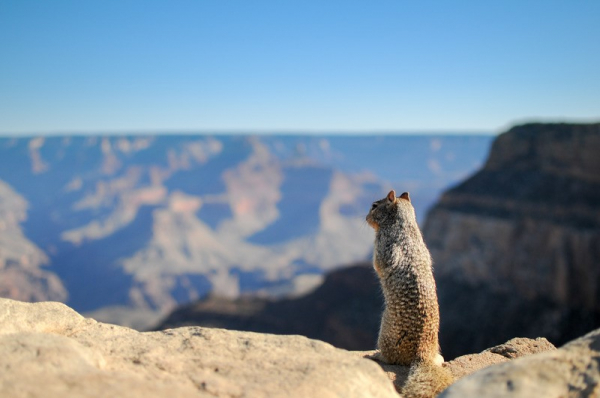UAH research finds squirrels key to understand climate change
Juan López Cantalapiedra, postdoctoral researcher at University of Alcalá, has just published the results of an investigation that has investigated squirrels as one of the species that can teach us more about what causes climate change in all species.
- Squirrels belong to a very diverse group. What makes these animals special? Why did you choose this type of animal for your study?
When large-scale questions are asked, for example, whether tolerance to different climates has an impact on the evolution of a group, the object of study should be a group that lives in many places and diverse climate regimes. Squirrels are ideal in this regard, as they live from the deepest equatorial forests to the coldest and most arid tundra. In addition, squirrels are found on every continent except Antarctica, and have a multitude of different ecologies, from those that inhabit subway burrows to those that can glide through the tropical canopy, like flying squirrels.
- Explain to us what the research you have participated in has been, how have you carried out the research process? What has been the role of the University of Alcalá in the study?
The study involves three main phases. The first is the collection of data for 225 squirrel species, including the climate or climates where they live, wether they are present in mountainous areas, which geographic regions they have colognized, as well as their way of moving (wether they are terrestrial, arboreal or if they plan). The second phase is to rebuilding the relationship between all these species, i.e. rebuild their evolutionary tree or phylogeny. This is achieved with an immense amount of genetic data, which allow us to estimate the proximity of the species in this evolutionary 'family tree' and when the different lineages were separated in the past. These separation ages will be crucial in the third step, which is to determine whether lineages with certain ecologies or climatic adaptations diversify faster than others. It is in this third phase, the most analytical, where we have participated from University of Alcalá.
Finally, I would like to emphasize that it has been a privilege to work with Iris Menéndez, a researcher from Universidad Complutense de Madrid who is leading the work. She has a multidisciplinary background that has allowed her to conceive and develop an impressive effort, dealing with the collection of an ocean of data, with the construction of phylogeny and with the coordination of the different teams that we have contributed.
 |
| Juan López Cantalapiedra |
- What is the importance of this study? Why are squirrels key to understanding climate change?
The importance of the study is based on two points. First, as part of the process, we have built an updated and very complete squirrel evolutionary tree that will serve other researchers to expand our knowledge of this zoological group, including the optimization of conservation strategies based on evolutionary uniqueness (species that are the last representatives of their lineages and, if they became extinct, we would lose the entire lineage).
Secondly, by analyzing various characteristics (living in mountains, climate tolerance, geographical distribution) as possible causes that can affect the multiplication of species, we have seen that the most important is climate tolerance and unravel that it in turn 'pollutes' the signal when looking at the other characteristics. For example, there was a very important diversification event in North America that took place around 15 million years ago, whose signal we pick up when we see high rates of diversification in the lineages of land, North American and also those associated with mountains. By analyzing all these factors at once, we are able to identify a single event as the cause of all these patterns.
- Are you developing other projects related to the one you have just published? Are you preparing other different research?
The work we are doing at the University of Alcalá, as part of the research project I coordinate, is also to identify factors that determine that some groups diversify more than others. Our work focuses on groups of large terrestrial herbivores (rhinos, elephants, antelopes, and their sister primal lineages), but focusing on their fossil record, which provides a greater detail of the processes of the past. In this way, we can ask ourselves if factors such as climate or competition between different species were determining factors or not in promoting the diversification of groups or their extinction.
Publicado en: Inglés
